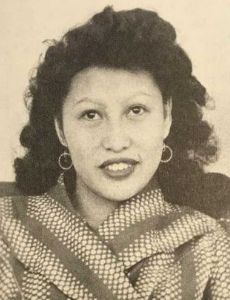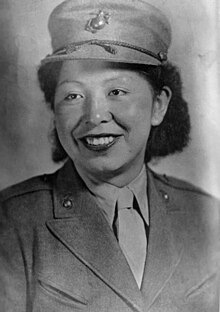8 Imix
Red Galactic Dragon
Red
Dragon
Red
Road
Red
River
Red
Earth
Giver
of Birth
Death
And
Re-birth
Universal
Water
Flows into
Flows into
High
Dimension
Initiate – Perfect – Ascend
Now
comprehend
The
Language of the Gods –
Hieroglyph!
©Kleomichele Leeds
"Community" by Roxanne Swentzall; photo courtesy of Roxanne Swentzell.
Roxanne Swentzell loved art from an early age. As a child, Swentzell struggled with a speech impediment that prevented her from communicating. Unable to articulate her emotions through words she began to make miniature figures in clay to convey her feelings. The sculptures she created as a means to express herself to others continues to be her primary artistic medium to date.
While still in high school, Swentzell attended the Institute of American Indian Arts in Santa Fe, New Mexico. In 1979, the young artist left home for the Portland Museum Art School because of its emphasis on the human figure. At the Portland Museum Art School she progressively grew unhappy. After one year in Portland, the homesick Swentzell returned to Santa Clara Pueblo. Back in her native soil she began to build her family and home while her creativity flourished.
Swentzell’s clay sculptures have moved and delighted audiences around the world. Her artistic endeavors have won Swentzell numerous awards since her early twenties.
Swentzell's first public exhibit was at the annual Santa Fe Indian Market in 1984; two years later she won a total of eight awards for her sculpture and pottery at the same event. In 1994, Swentzell also won the Market’s Creative Excellence in Sculpture award. Swentzell’s work combines personal and society commentary and reflects a deep respect for the earth, family, and cultural heritage. Her sculptures have shown at the White House in Washington, DC, and in galleries and museums worldwide. Some of her permanent installations are at the Smithsonian’s National Museum of the American Indian, Cartier in Paris, the Santa Fe Convention Center, and the Museum of Wellington in New Zealand.
Roxanne Swentzell was born on December 9, 1962 in Taos, New Mexico, a Pueblo located in a tributary valley off the Rio Grande. Her parents Ralph and Rina Swentzell nurtured and facilitated Swentzell’s interest in art early on in her life. Her German-American father was a philosophy professor at St. John’s College. Her mother, Rina Swentzell, was a distinguished activist, scholar, and architect who came from a Santa Clara Pueblo family of artists. Roxanne’s uncle, Tito Naranjo, was a scholar and artist. Michael Naranjo, another uncle, is a well-recognized sculptor who was blinded in the Vietnam War. Two of Swentzell’s aunts, Jody Folwell and Nora Naranjo-Morse, are admired potters in the art community.
As a young child Swentzell began to experiment with clay, creating tiny figures to convey her feelings. Roxanne found it exceedingly difficult to communicate through speech because of a speech impediment. The desperate need to express her feelings provoked her to collect scraps of clay from her mother, a potter, to create figures to illustrate her feelings. When she was in first grade, Swentzell molded a small clay school desk with sad, weeping little girl slouched in it. The sculpture was meant to explain her unhappiness at school to her mother. Sculpting became Swentzell’s primary means of communication: an emotional outlet and safe haven to express her feelings. Swentzell’s teachers were amazed by her clay figures and took a special interest in developing her talents as a young sculptor.
The descendant of a long line of the talented potters of the Santa Clara Pueblo, Swentzell grew up with customary methods of Pueblo pottery making. She grew up watching her mother harvesting clay then hand-coiling and pit-firing pots. She learned from an early age how to dig, mix and process her own clay.
Education
The initial difficulties that Swentzell encountered in grade school continued throughout her formal education. Discontented, Swentzell exhausted every art opportunity at her high school. In 1978, Swentzell’s parents enrolled her in the Institute of American Indian Arts (IAIA) in Santa Fe. It was here that Swentzell gave her first art show in the school’s museum. Following her two years at IAIA, Swentzell attended Portland’s Museum Art School in 1980. However, Swentzell soon grew homesick after one year of study. Swentzell’s homesickness stemmed from her growing dissatisfaction and disillusionment with Portland’s art scene. She found that artists in Portland separated art from their everyday lives and their art did not reflect what surrounded them. This was especially disheartening to Swentzell, as her art had always been inspired by her own life experiences.
While Swentzell’s formal education ended with her departure from The Portland Museum Art School, Swentzell does not consider that the end of her education. Swentzell has said that “Everyday is an amazing new book, a test in every discipline, a chance to advance myself, and great times on the playground.” This philosophy is reflected in her decision to home school her two children. Of this experience, Swentzell has commented that raising and home schooling her children was an education for her as well.
Personal life
Swentzell’s ability to balance her family obligations and art has resulted in a dual prosperity for her family and her artistic endeavors. Swentzell's daughter Rose Bean Simpson followed in the family practice of making art. Simpson is a graduate of the Rhode Island School of Design and is a sculptor. Porter Swentzell is a processor at IAIA, a dancer, and singer. Swentzell home-schooled her children, the children of several neighbors, and her grandchildren. Remembering how much trouble she had in school, Swentzell provided a nurturing education for her own children and others.
Furthermore, Swentzell's deep relationship with nature has given birth to an oasis of trees and gardens in the high desert landscape of Santa Clara Pueblo that she calls home. Swentzell lives in a solar-powered adobe house that she built herself. Here, she partakes in the pueblos ceremonial dances and feasts.
In addition to her art, Swentzell farms her own land to provide self-sustenance. Swentzell is the Co-Founder and President of the nonprofit Flowering Tree Permaculture Institute created in 1987 at the Santa Clara Pueblo. Flowering Tree is an organization that is based on the theory of ecological design which seeks to build sustainable human living and agriculture. The Institute provides lessons on different techniques and methods for healthy living. Some classes taught at the Flowering Tree Permaculture Institute include: how to farm, how to farm in a high desert climate with low water use, how to take care of animals, adobe construction, and solar energy. Swentzell’s work with Flowering Tree Permaculture Institute reflects her dedication to nurturing the Earth and sustaining its resources. To further her work with the Institute, and to her own personal philosophy, Swentzell looks to her Native American ancestors as examples of preservers and protectors of the earth. Her concerns extend not only to preserving the earth but to preserving the indigenous knowledge of conservation. She initiated the Pueblo Food Experience, in which participants only ate foods available to pre-contact Tewa people.
Artwork
Swentzell demonstrates her remarkable and versatile talent in her diverse collection of work. Her sculptures are emotional portrayals of her own personal experiences. Though deeply personal, her art is also intensely rooted in her Santa Clara Pueblo culture. The subjects of her work are predominantly female and focus on issues such as gender roles, identity, politics, family, and the past.
Like in classic Pueblo pottery, Swentzell crafts her clay figures from coils of clay. Swentzell, however, differs from other Pueblo potters who dig, sift, clean, and process their own clay by choosing to use store bought clay. Swentzell has stated that she is not overly concerned that her clay is store bought, as clay, no matter how it is packaged, comes from the earth.
Once Swentzell has her clay, she squeezes the clay into thick coils and then joins the coils together to build the walls of her figure. During the two- to four-day process of coiling, Swentzell keeps the clay moist. and uses a knife or stone to smooth over the ridges of the coils. While Swentzell’s figures are hollow, the toes and fingers of each figure are solid. Swentzell leaves vacant space at the core of her figures in order to reduce the chance the figure will explode in the burner while baking. The final figure Swentzell produces is often painted and can include details of eyes, hair or clothing on the figure.
Swentzell’s Santa Clara heritage can especially be seen in her Clown series. A clown, or koshare in the Pueblo belief, is a sacred being that often teaches through its actions. Swenztell’s Despairing Clown figure is a commentary on the loss of identity. The sculpture itself is a clown who looks down sadly as he peels off his stripes and seeks to convey the struggle of finding oneself again. Emergence of the Clowns (1989), symbolizes the surfacing of the Pueblo people into this world. Three of the figures in Emergence are partial human forms which progressively lead to a final figure who is complete. Each partial form is meant to capture emotions of amazement, knowledge, and awe. The stages of ascendancy in Emergence, shown in each figure’s development, further accentuate the Pueblo’s collective journey upward.
Pinup (2000) and In Crisis (1999) address what Swentzell’s believes to be the unrealistic physical expectations placed by popular culture on young women and the resulting struggle by women with self-image and identity. In Pinup, the Native American woman’s unemotional face is painted white. The figure covers her nude form behind a headless poster of a thin, bikini-wearing model (similar to the graphic posters of Playboy pin-ups from the late 1970's by Patrick Nagel). The figure struggles to fit into society’s preconceived image for her, hiding behind the mask of an unobtainable image, both in color and shape. The burden of the “perfect” body and face weighs heavily on the figure; the figure is reduced to a slouched, defeated posture; the figure's fingers and toes are unadorned by make-up and the poster, and expose the figure’s genuine beautiful nature.
Swentzell's In Crisis, seeks to explore the media's influence on beauty and identity. The figure in this piece is conscious of the effect the media and pop culture is having on her. The figure struggles to fight off these projected ideals of beauty and identity by clawing her own hand. Yet, the figure’s own brightly painted red fingernails symbolize the danger the media poses to her.
Swentzell likens her artwork to a personal journal that is shared with all who are interested. She continues to sculpt her story as it unfolds and her art represents the path that Swentzell has crafted for herself: one that is led by her emotions, experiences, and creation of art.*
IMIX
Kin 21: Red Galactic Dragon
I harmonize in order to nurture
Modeling being
I seal the input of birth
With the galactic tone of integrity
I am guided by the power of life force.
Infinity is the mind of God, or the instant of all-encompassing inter-dimensional space full of the telepathically structured programs of existence.*
*Star Traveler's 13 Moon Almanac of Synchronicity, Galactic Research Institute, Law of Time Press, Ashland, Oregon, 2017-2018.
The Sacred Tzolk'in
Anahata Chakra (Silio Plasma)





















